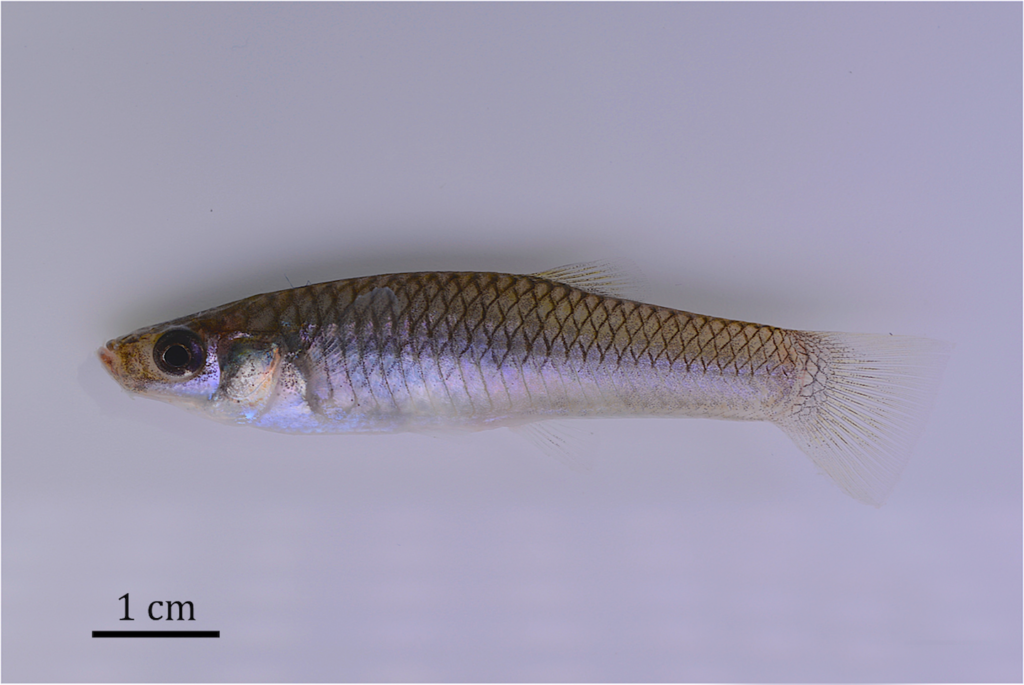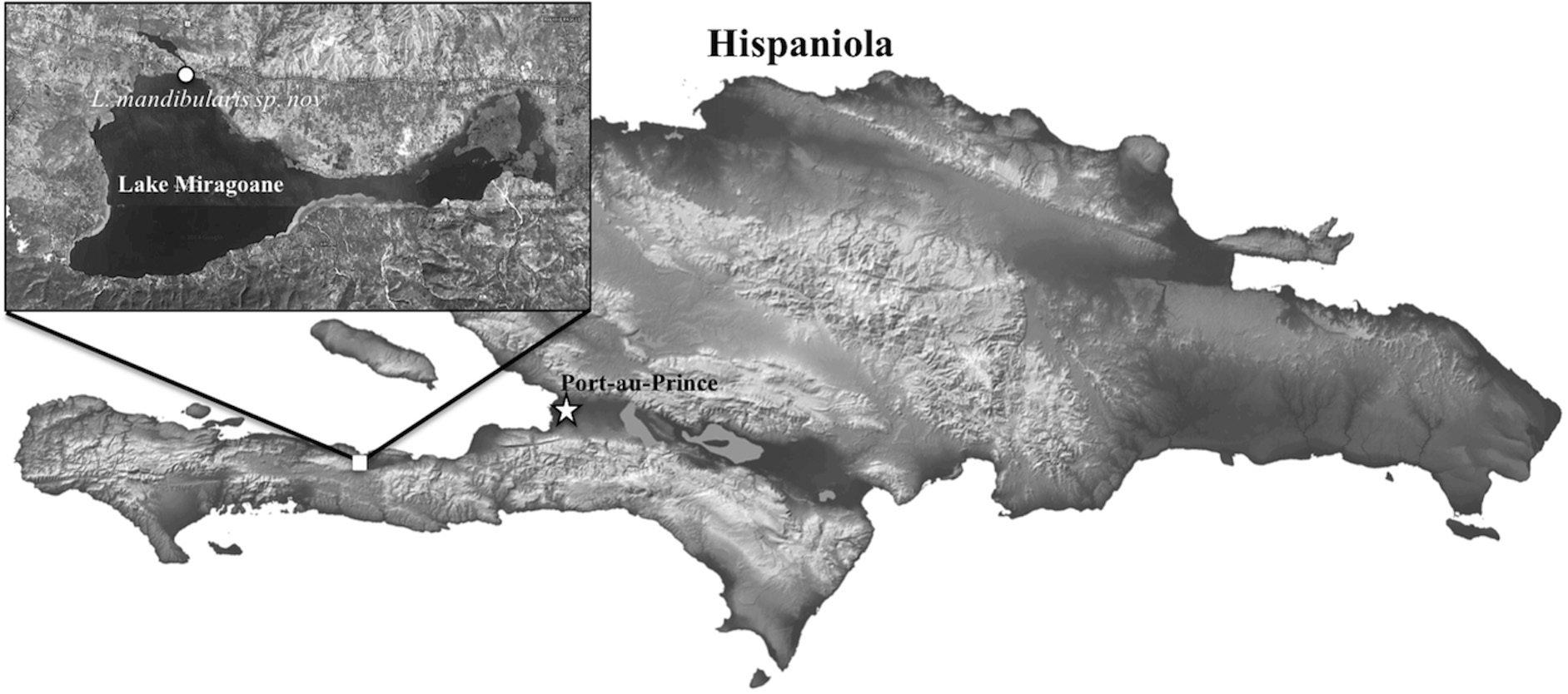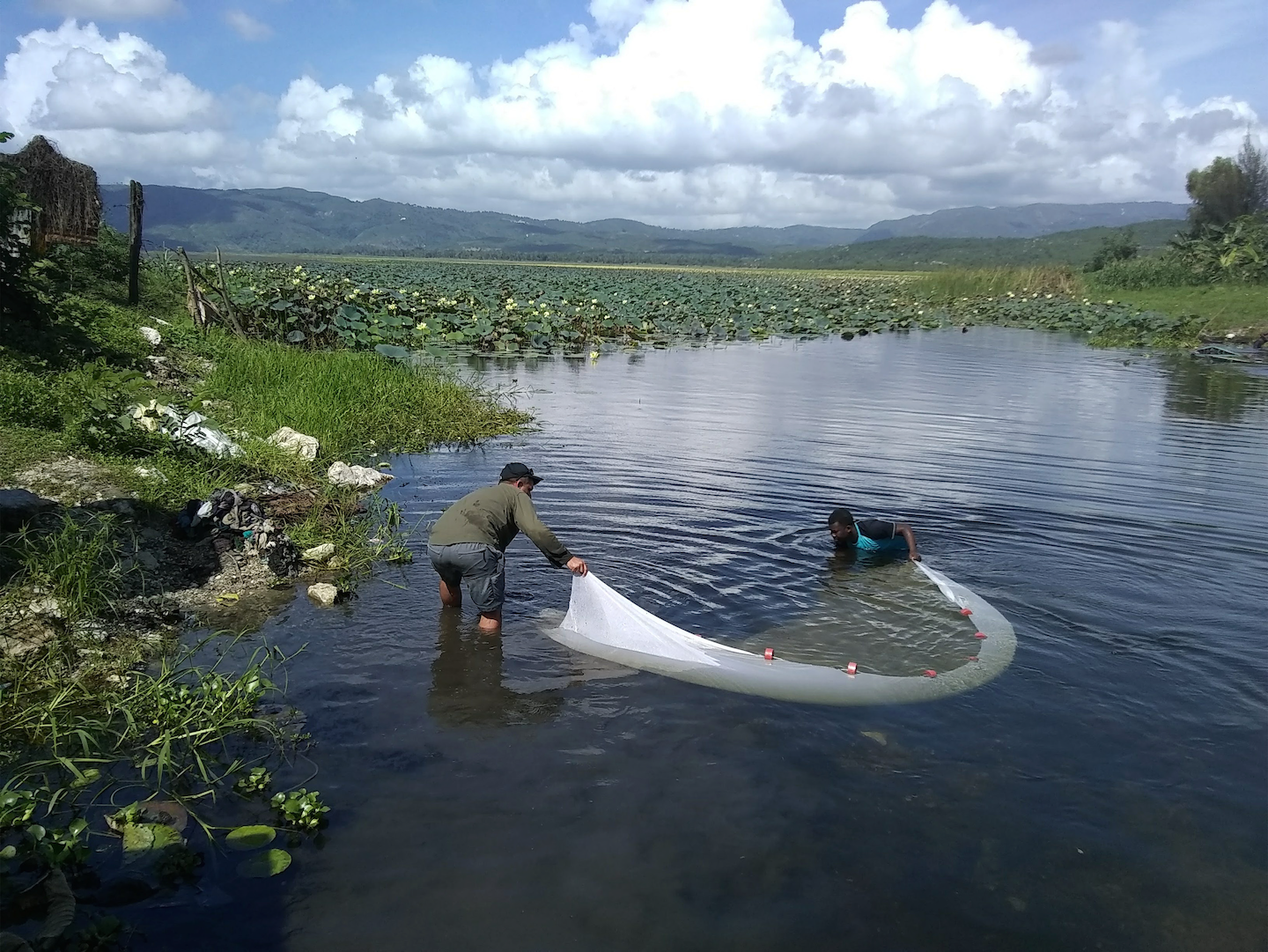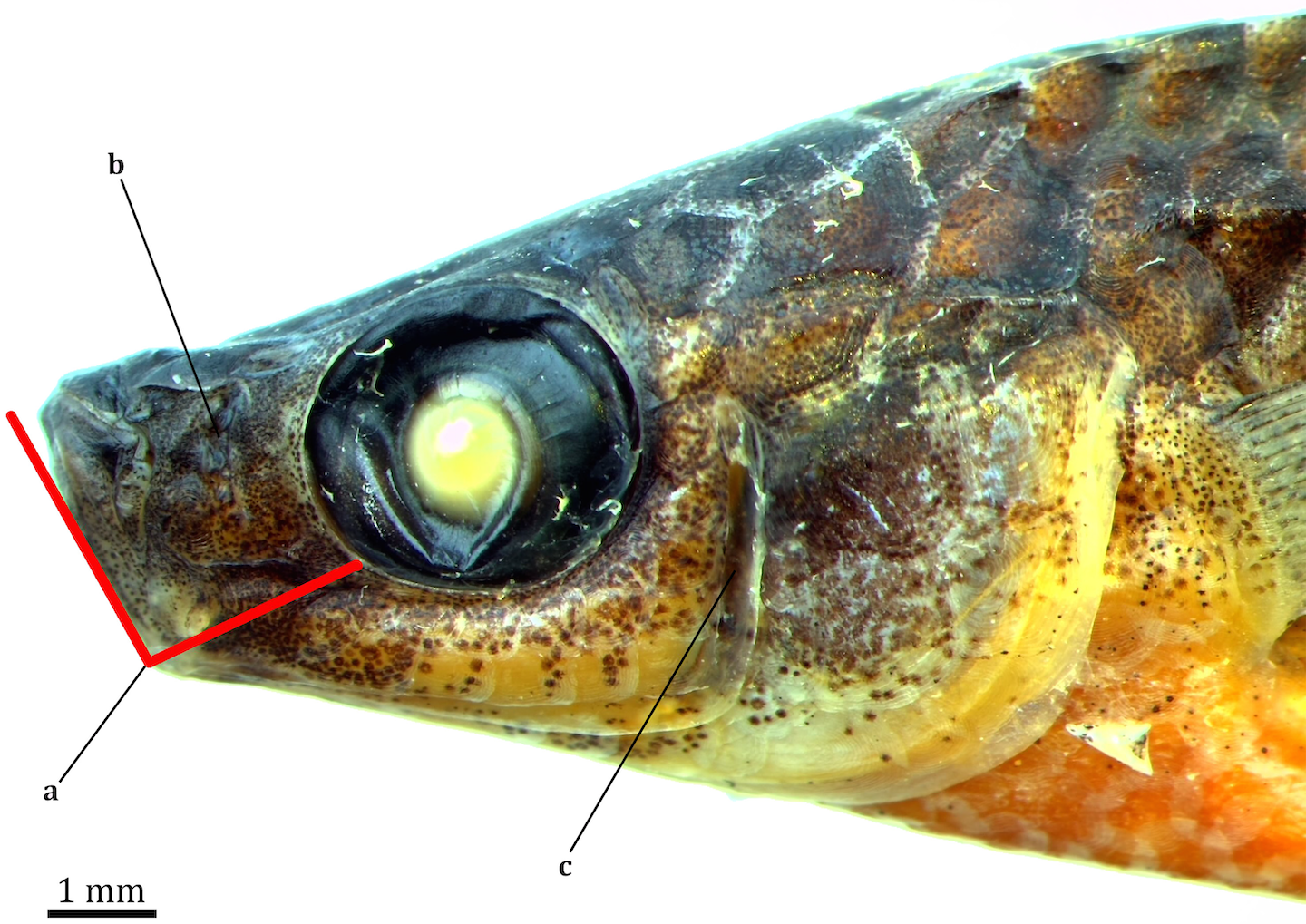
Female Limia mandibularis (48.5 mm SL). Image from Rodriguez-Silva, Torres-Pineda, and Josaphat 2020.
A graduate student from the University of Oklahoma describes a second novel fish species this year. Rodet Rodriguez-Silva and co-authors Patricia Torres-Pineda and James Josaphat in the journal Zootaxa recently described Limia mandibularis, the ninth Limia endemic to Lake Miragoâne, Haiti.
Lake Miragoâne
In terms of species richness and abundance, the fresh waters of the Caribbean are dominated by livebearing fishes. Prior to this description, Hispanola (Haiti and the Dominican Republic) was known to harbor 18 species of Limia endemic to the island. Although some Limia are known to tolerate varying degrees of salinity, most are found in inland waters. One lake that appears to be an epicenter of species radiation in the Caribbean is Lake Miragoâne in southwestern Haiti. Lake Miragoâne, although one of the largest freshwater lakes in the Caribbean, is a mere 7.5 miles (12 km) long with a surface area of 9.25 square miles (25 km²).

Map of Hispaniola highlighting Lake Miragroâne in southwestern Haiti. Image from Rodriguez-Silva, Torres-Pineda, and Josaphat 2020.
Endemic Livebearers of Lake Miragroâne
Lake Miragroâne now harbors nine endemic Limia species. Limia nigrofasciata (black-barred limia) and L. ornata (ornate limia) were scientifically described by Regan in 1913. Limia grossidens (largetooth limia), L. fuscomaculata (blotched limia), L. garnieri (Garnier’s limia), L. immaculata (plain limia), and L. miragoanensis (Miragoâne limia) were described by Rivas in 1980. Limia islai (tiger limia) was described by Rodriguez-Silva and Weaver earlier this year, and finally, Limia mandibularis, the jawed limia, completes the list. *Note that according to Eschmeyer’s Catalog of Fishes the accepted scientific genus for these fishes is Poecilia. Limia is a sub-genus of Poecilia.* In addition to the numerous endemic Limia, Lake Miragoâne is also home to an endemic Gambusia, G. beebei (Miragoâne gambusia).

Habitat of L. mandibularis in Lake Miragoâne. Image from Rodriguez-Silva, Torres-Pineda, and Josaphat 2020.
The Jawed Limia
As the name implies, a key diagnostic feature of L. mandibularis, the jawed limia, is the distinctive shape of the mouth. It has a supra-terminal mouth whose jaw nearly forms a right angle with the inferior edge of the eye when the mouth is closed. Limia mandibularis most resembles L. immaculata as both species lack distinctive color markings on the body or fins that are found on other Miragoâne Limia. The jawed limia is more elongate than the plain limia, and the species can be further differentiated based on the position of the dorsal fin in relation to the anal fin in females. The origin of the dorsal fin in female L. mandibularis is posterior to the origin of the anal fin, whereas the origin of the dorsal fin is directly above the origin of the anal fin in L. immaculata.
The dorsal region of L. mandibularis is yellowish with darker coloration at the snout and above the opercula. Its ventral region is silver. The reported size range of L. mandibularis is 33-41 mm SL.
The fish were collected in the north bight of the lake in an area that had muddy bottoms and some submerged and semi-submerged vegetation along the banks. At the date of collection (June 2019), the water temperature was a warm 85.8°F (29.9°C) and the water conductivity was 321 µS/cm.

Figure 4 from Rodriguez-Silva, Torres-Pineda, and Josaphat 2020: Head of Limia mandibularis showing the protuberance in the lower jaw (a), the single preorbital canal forming an open groove (b) and the single preopercular canal forming an open groove (c). Red lines show the quadrato-mandibular joint forming nearly a right angle between the front of the mouth and the inferior edge of the eye globe.
The authors speculate that trophic specialization may be one driving factor that is responsible for the high radiation of Limia in Lake Miragoâne. The unique jaw morphology of L. mandibularis supports this notion, and Rodriguez-Silva and Ingo Schlupp of the University of Oklahoma have preliminary data that show that Limia species may specialize or prefer certain food items over others. I look forward to learning more about the endemics of Lake Miragoâne and the driving factors responsible for the species radiation of the Caribbean livebearers.
Article Abstract
Limia mandibularis, a new livebearing fish of the family Poeciliidae is described from Lake Miragoane in southwestern Haiti on Hispaniola. The new species differs from all other species in the genus Limia by the presence of a well-developed lower jaw, the absence of preorbital and preopercular pores, and preorbital and preopercular canals forming an open groove each. The description of this new Limia species from Lake Miragoane confirms this lake as an important center of endemism for the genus with a total of nine described species so far.
Reference
Rodriguez-Silva, R., P. Torres-Pineda, and J. Josaphat. 2020. Limia mandibularis, a new livebearing fish (Cyprinodontiformes: Poeciliidae) from Lake Miragoane, Haiti. Zootaxa 4768 (3): 395-404.





